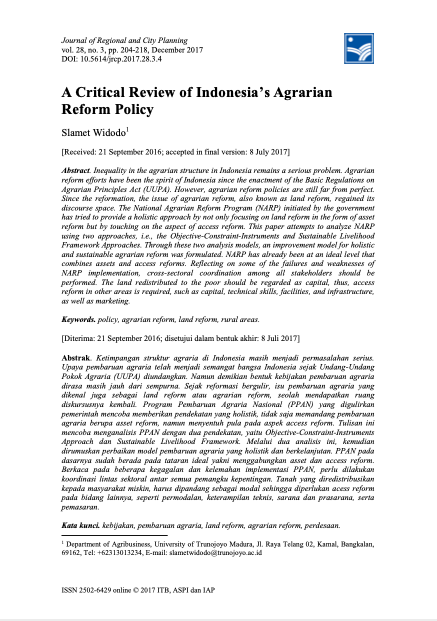Resource information
Copyright © 2019 Journal of Regional and City Planning
Inequality in the agrarian structure in Indonesia remains a serious problem. Agrarian reform efforts have been the spirit of Indonesia since the enactment of the Basic Regulations on Agrarian Principles Act (UUPA). However, agrarian reform policies are still far from perfect. Since the reformation, the issue of agrarian reform, also known as land reform, regained its discourse space. The National Agrarian Reform Program (NARP) initiated by the government has tried to provide a holistic approach by not only focusing on land reform in the form of asset reform but by touching on the aspect of access reform. This paper attempts to analyze NARP using two approaches, i.e., the Objective-Constraint-Instruments and Sustainable Livelihood Framework Approaches. Through these two analysis models, an improvement model for holistic and sustainable agrarian reform was formulated. NARP has already been at an ideal level that combines assets and access reforms. Reflecting on some of the failures and weaknesses of NARP implementation, cross-sectoral coordination among all stakeholders should be performed. The land redistributed to the poor should be regarded as capital, thus, access reform in other areas is required, such as capital, technical skills, facilities, and infrastructure, as well as marketing.


